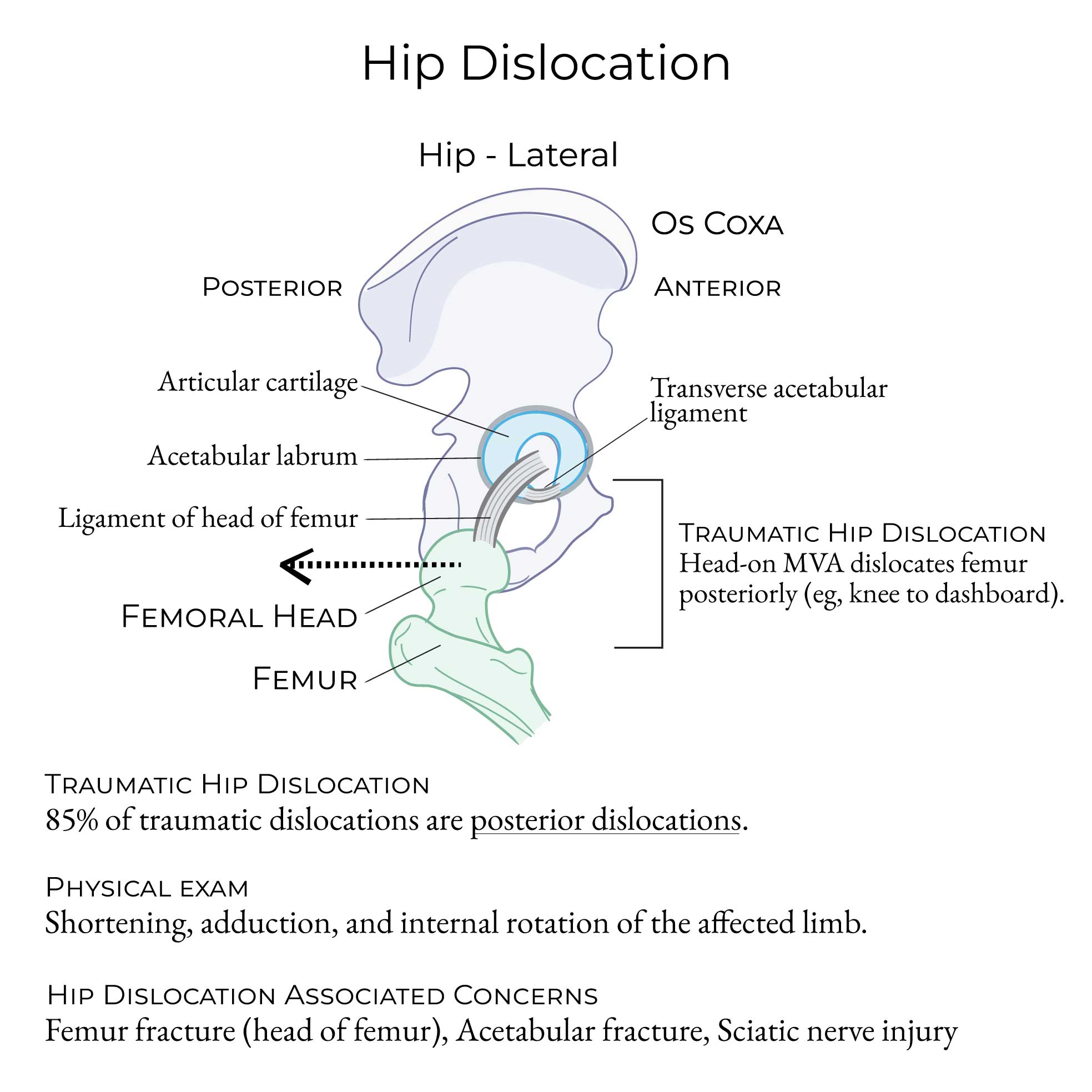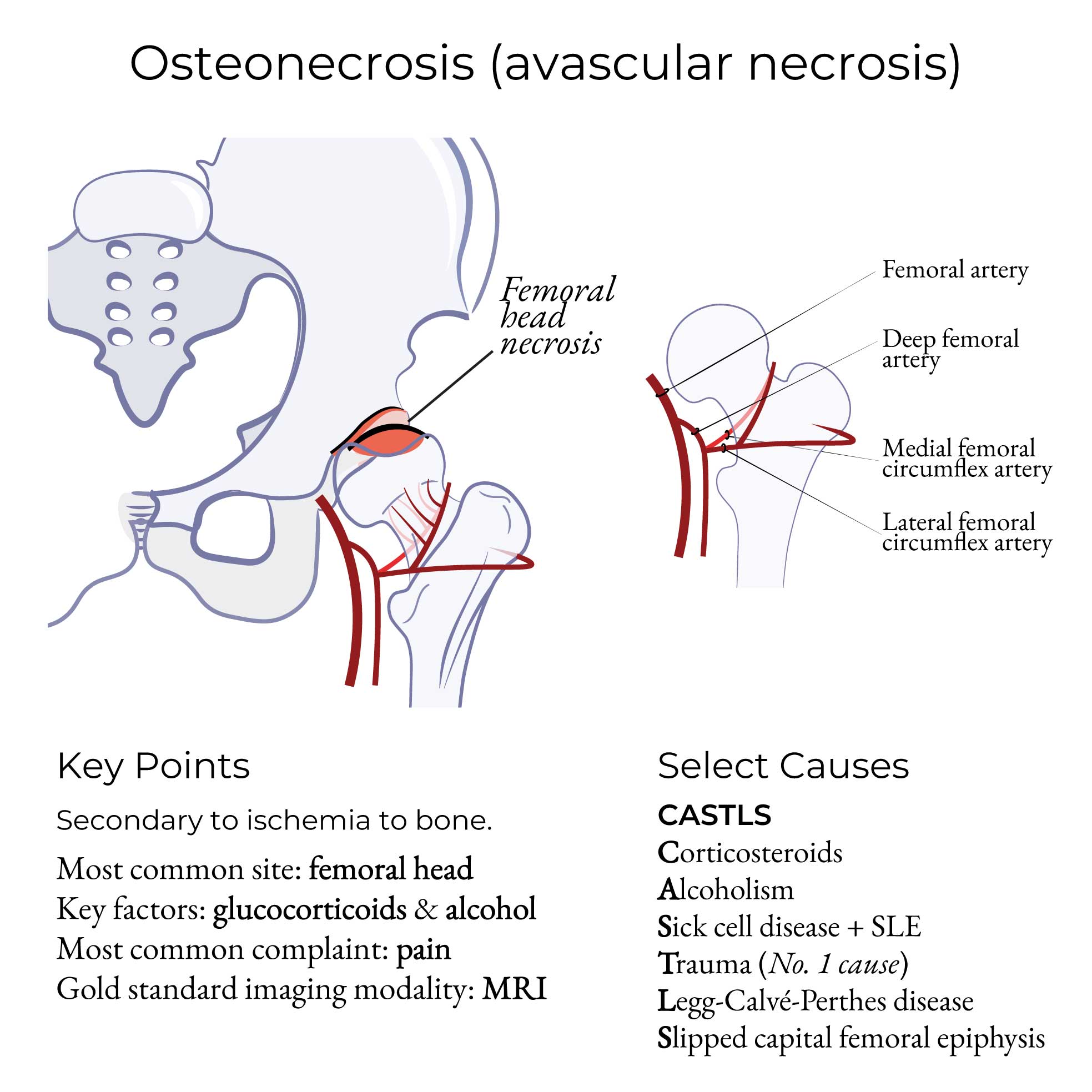
Start your One-Week Free Trial
Already subscribed? Log in »
Lower Extremity - Femur
Femur
Head
- Articulates with acetabulum of the os coxa of the pelvis
- Fovea capitis is attachment site for the ligament of the head of the femur
Neck
- Connects femoral head and shaft
- Vulnerable to fracture
Greater and lesser trochanters
- Arise from junction of femoral shaft and neck; sites for muscle attachment
- Greater trochanter arises laterally
- Lesser trochanter arises medially
- Intertrochanteric line (anteriorly) and intertrochanteric crest (posteriorly) extend between greater and lesser trochanters
Shaft
- Gluteal tuberosity extends inferomedially from the greater tubercle (attachment site for gluteus maximus)
- Linea aspera descends along posterior femoral shaft; comprises medial and lateral lips (attachment sites for muscles of the thigh)
- Supraconylar lines (medial and lateral) are distal continuations of the lips of the linea aspera
- Spiral line arises on proximal femur and merges with the medial lip of the linea aspera
- Pectineal line lies superolateral to the spiral line, and also merges with the medial lip of the linea aspera
Epicondyles
- Medial epicondyle has adductor tubercle (attachment site)
- Lateral epicondyle
Condyles (medial and lateral)
- Distal end of femur
- Intercondylar fossa is notch between lateral and medial condyles
Patellar surface
- Anterior site of patellar (kneecap) articulation.
Clinical Correlations
- Posterior hip dislocation can cause fractures of the femoral head; leg appears shortened with medial rotation.

- Femoral neck fracture can cause ischemic necrosis; the leg appears shortened with lateral rotation.

- "Pretrochanteric fractures," are fractures through the trochanters; occur as a result of extracapsular hip fracture. Leg appears shortened with lateral rotation.
- Fracture of the middle third the femoral shaft, causes the femur to appear shortened.
- Fractures to the distal femur may injure the popliteal artery, the major artery of the posterior knee.
- Pillion fractures, which are T-shaped fractures of the distal femur, result in displacement of the condyles. A pillion fracture can be caused by a blow to a flexed knee, such as when one is riding pillion.
- Atypical femoral neck angles: if the angle between the neck and the head exceeds 135 degrees (aka coxa valga), the femoral neck extends more vertically; if it is under 135 degrees (aka coxa vara), the femoral neck extends more horizontally.
- Transverse fracture of the patella can result from a blow to the knee or sudden contraction of the quadriceps.
Muscles of the Thigh:
Anterior
Posterior
Medial
Cross Section

